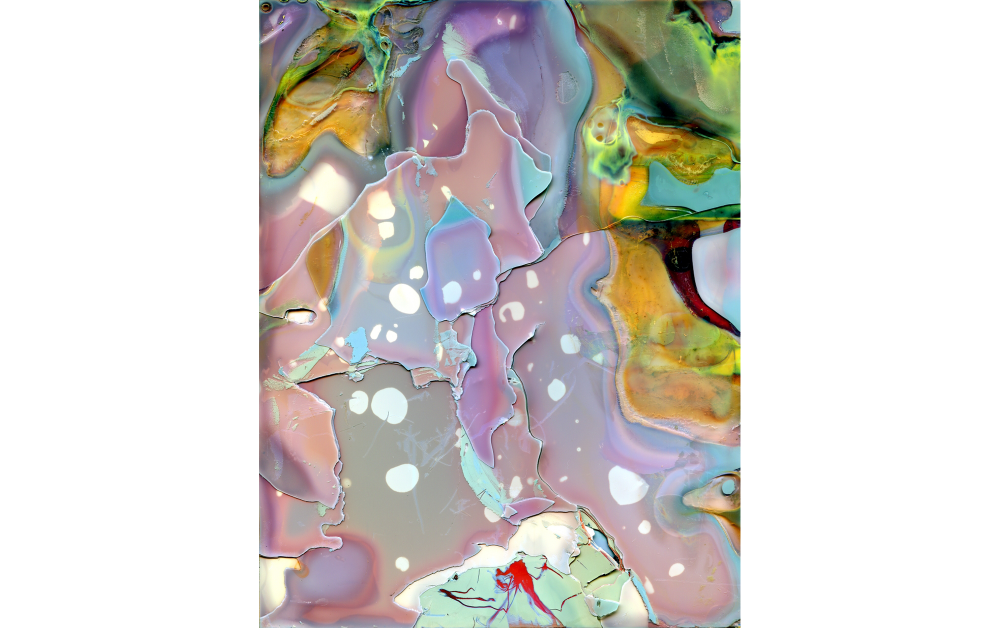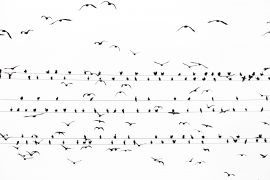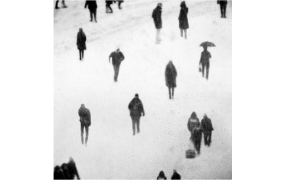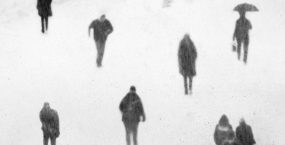Where does the photographic process begin and where does it end? Often the making of a photograph is considered to be a momentary event: the instant when the shutter is released and a photosensitive element is exposed thereby recording the physicality of reality. The work and methodology of photographer Daisuke Yokota upends this approach in such a persuasive manner that it calls into question many of the basic tenets of photography and recording. In his work, the process by which images are generated has become part and parcel of the resulting print. In other words, rather than attempt to conceal the means by which an image is created, the process is made apparent.
To create his black-and-white images, the photographer began with images that he shot and then later scanned and re-scanned. In many cases, the original images were selected from an archive of photographs that Yokota shot years before he started his production process. With each iteration of print-scan-print-rescan the image mutates. In one sense, the image degrades with each step of the process: edges become smooth, contrast becomes enhanced, or perhaps some noise is introduced into the image and becomes exaggerated. In another sense, Yokota is accumulating information with each iteration of the scan-and-print procedure, adding to the image as it morphs. The resulting images imply a chain of individual processes that are each irrevocable and definitive. In this way, Yokota has expended the means of the photographic process, adapting the ideas of the darkroom development of negatives and combining it with the photographic event. The same is true of Yokota’s more recent color work. The large light boxes show what happens to the emulsion layer of color negatives when exposed to hot water. The photosensitive layer fragments randomly. Rather than using a light source, the chemistry is developed as a purely chemical process. This is one example of a camera-less photograph. The photosensitive material that would otherwise be undetectable to the eye, used to show some representation of reality, is instead laid bare as a thin sheet of light-sensitive parts.
Can photography be reality in itself? As opposed to a representation of reality, which is ultimately an illusion, perhaps Yokota’s presentation of the Thing in itself comes closer to the project of photography than images that are conventional representations of Reality. In our post-digital era and its suffusion of information into every aspect of our lives, awareness of how the mind’s eye reconstructs the image is the experience of Yokota’s photography. That having been said, the sensuousness of Yokota’s use of color, form, and gradation is the reality that persists.
― Ivan Vartanian Director, the amana collection
【About the amana collection】
the amana collection represents the excellence of contemporary Japanese photography. Begun in 2011, the collection is comprised of approximately nine hundred exhibition prints thus far, representing a broad cross-section of approaches and methodologies.
the amana collection brings together the work of those photographers who question our established ways of thinking and seeing in order to clear the way for the new. the amana collection is committed to supporting the efforts of Japanese photographers by raising the awareness and understanding of their photography.
| Title | 「the amana collection Exhibit 05: Daisuke Yokota」 |
|---|---|
| Dates | Saturday 14 December, 2019 – Monday 20 January, 2020 |
| Site | IMA gallery(Tokyo) |
| Time | 11:00 – 19:00 |
| Closed | Sundays and National Holidays |









